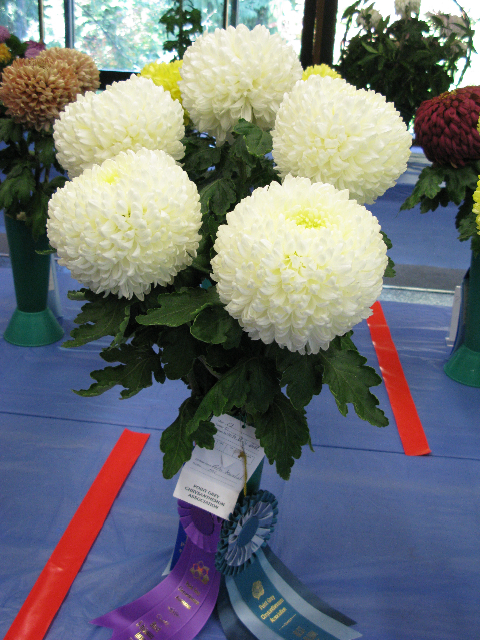Content

Point Grey Chrysanthemum Association, Vancouver, British Columbia
(1) How many leaves does a chrysanthemum grow?
If any particular chrysanthemum cultivar is not pinched, it will grow a fixed number of leaves (called the LDL count) on the main stem before it forms a break bud. For example, the Cream Duke of Kent has an LDL count of 52. If the growing plant tip is pinched (stopped) at any time during its growth, it grows one or more new branches (called laterals) and starts counting again, growing 52 leaves on each of these laterals. It then grows a break bud at the end of each lateral. If the tip of any of these laterals is subsequently also pinched, the plant starts counting from scratch again and starts growing another 52 leaves above that last stop. Of course, the growing of these leaves may be interrupted by onset of 10-hour nights (which occur in mid August), which triggers the development of a flower bud, and the LDL count will not be reached. This accounts for why the last stop of a given cultivar is timed so that there is just enough time for that plant to grow its LDL count of leaves.
(2) What pigments does the chrysanthemum use?
There are really only two pigments that produce the many colours that we see on chrysanthemum blooms:
(1) anthocyanin
This is a somewhat unpleasant tasting red flavinoid that is a water-soluble glucoside. It is responsible for the red color of leaves in fall and the color of blackberries in which its concentration is very high:

(2) cromatin
This is a very large molecule that contains DNA, RNA, and protein in plant cells. It is sometimes said to be like beads on a string. The string is the DNA or RNA double helix and the beads are balls of protein called nucleosomes. The molecule is yellow and is in the nucleus of the plant cells.




